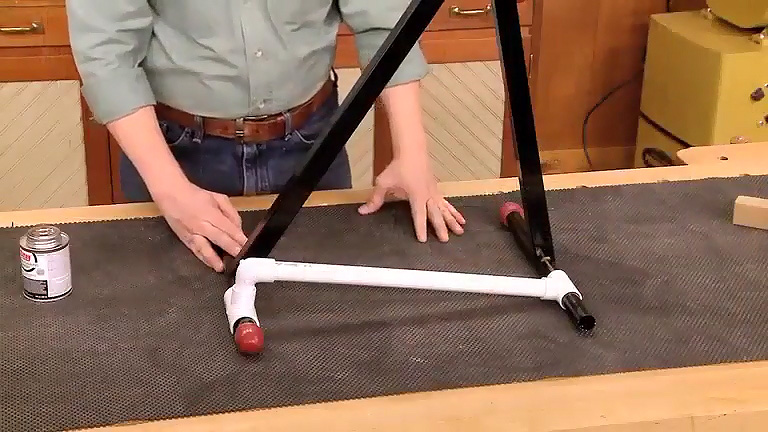For such a simple tool, a hand scraper (also called a cabinet or card scraper) can be incredibly useful. A scraper is nothing more than a thin, rectangular piece of flexible steel. It works kind of like a cross between a hand plane and sandpaper. A scraper will lift fine shavings (and a little dust) from the wood surface without the worry of tearout. So, it’s easier to use than a handplane, but it does the job a lot faster than sandpaper. I often reach for a scraper to remove planer or saw marks on difficult wood, to smooth panels, or “flush out” plywood edging.

There’s really no single way to use a scraper. But, a few pointers will help you get better results. Using a scraper is a two-handed job. The main reason for this is that the flexible scraper works best when forced into a slight bow. This bowed shape concentrates the scraping action over a smaller area and reduces the effort involved. It also keeps the corners of the scraper from gouging the wood.

Some woodworkers like to “crown” the blade away from their bodies and push it across the wood. Others, myself included, find it easier to pull the scraper. This method makes bending the scraper a bit more work, but for me, it’s easier to see and control the cut.

When you draw a scraper across a workpiece, there are a couple angles to think about. The first is the pitch or cutting angle of the blade (detail ‘a’). The second is the angle of the long scraper edge in relation to the grain direction. The good news here is that neither angle is critical. The cutting angle is usually somewhere between 45° to 60° to vertical. But basically, it’s whatever angle seems to work best. The burr you form isn’t always going to be the same size and shape. So basically, it’s just a matter of feel. Fine shavings let you know it’s right. As the drawing shows, the scraper blade is held slightly skewed to the grain direction. This way, the scraper is more likely to hit the high spots and skip over the low spots. To avoid creating ridges, I alternate angling the blade from one side to the other. You’ll find that the learning curve for success with a scraper is a pretty small hill to climb. And it’s definitely worth the effort.











